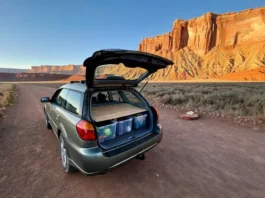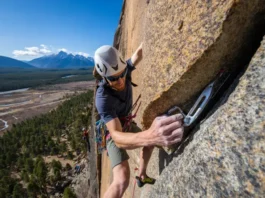In this article
The pre-dawn light filters through the back window, illuminating the familiar, compact world of your mobile basecamp. The crisp air carries the scent of pine and damp earth, a signal that another day at the crag is about to begin. This idyllic scene isn’t an accident of fortune; it’s the end result of a meticulously engineered system. This guide deconstructs that system, revealing how to transform the popular #vanlife narrative from a picture of effortless freedom into an actionable blueprint for a sustainable, high-performance life architected for one purpose: sending hard routes.
This journey begins not with a romantic escape, but with a deliberate engineering of a high-performance system for dedicated rock climbers. True freedom on the road is earned through meticulous planning, technical mastery, and a profound sense of stewardship, transforming a vehicle into a tool that actively enhances one’s journey as an athlete and guardian of the wild. We will move beyond the superficial social media influence and dive into the complex financial, mechanical, and ethical realities of this lifestyle. You will finish with the understanding that this is a holistic system where every component in your van conversion—from auxiliary battery choice to waste disposal—is interconnected, empowering you to build a life of full-time vanlife in deep, functional harmony with your athletic passion.
The long-term success of this journey is forged in the initial decisions of finance, vehicle selection, and build quality. True off-grid autonomy, which translates directly into more time spent at remote crags, is discovered through robust electrical systems, water, and climate control. From there, we learn to transform the van from a simple living space into a high-performance training and recovery facility on wheels. Finally, we embrace the crucial shift from a passive user of public lands to an active steward and advocate, ensuring the lifestyle remains sustainable for future generations of climbers.
How Do You Build the Foundation for Climber Van Life?
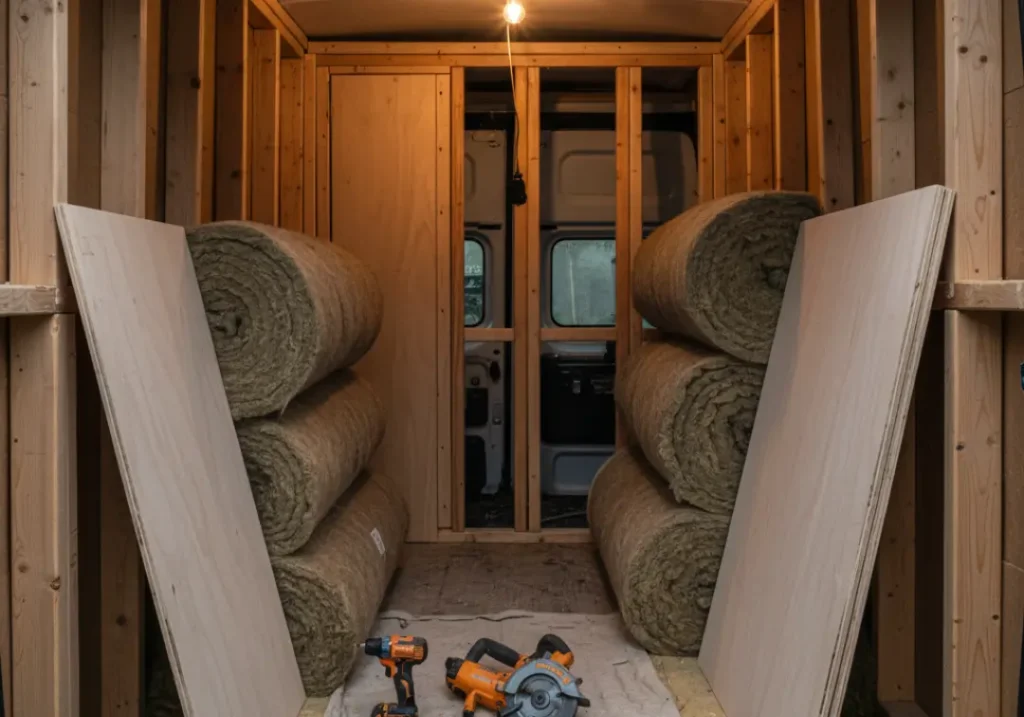
The bedrock of a sustainable nomadic existence is poured long before the first wall panel is installed. It’s formed in the critical upfront decisions surrounding financial architecture, vehicle platform selection, and the physical van build process itself. Getting these foundational elements right is the difference between a fleeting adventure and a viable long-term lifestyle.
What Is the True Financial Blueprint for This Lifestyle?
The first step in engineering your van life is to understand the true cost, defining the “Tiers of Entry” which represent a spectrum of total upfront investment—a combination of the base vehicle’s purchase cost and the subsequent renovation cost. The Budget/DIY Tier ($25k – $50k) is often characterized by an older cargo van like a Chevy Express 2500 and a significant personal time investment of 300-800 hours for a full conversion. The Mid-Range/Hybrid Tier ($50k – $120k) is the sweet spot for many climbers; it blends a newer vehicle with a professional build, striking a balance between the cost of the van and its reliability. At the top end, the Luxury/Turnkey Tier ($120k+) represents a commitment to van life for climbers as a primary lifestyle, featuring new vehicles and high-end professional van conversions comparable to a down payment on a home.
The Three Tiers of Van Life Entry
Compare the investment, costs, and features across budget, mid-range, and luxury van life setups.
Upfront Costs
Van Cost: $10,000–$25,000 (Used)
Conversion Cost: $5,000–$25,000 (DIY)
Total Upfront Investment: $25,000–$50,000
Monthly Operational Cost: $1,500–$2,500
Key Features
Basic bed, portable battery, reliance on free camping, minimal amenities.
Upfront Costs
Van Cost: $20,000–$75,000 (New/Used)
Conversion Cost: $20,000–$75,000 (Pro/Modular)
Total Upfront Investment: $50,000–$120,000
Monthly Operational Cost: $2,500–$4,000
Key Features
Integrated kitchen, robust solar/electrical system, heater, occasional RV parks.
Upfront Costs
Van Cost: $60,000–$85,000+ (New)
Conversion Cost: $75,000–$100,000+ (Custom Pro)
Total Upfront Investment: $120,000+
Monthly Operational Cost: $5,000–$10,000+
Key Features
Interior shower, high-capacity off-grid systems, Starlink, premium finishes, 4×4 capability.
Beyond the upfront cost, van-dwelling hopefuls must understand their “Operational Cash Flow.” This is a far more accurate metric than a static average, as real-world expenses can range from a frugal $800 to over $5,000 per month. The primary drivers are variable: Fuel is the new rent, followed by food, a maintenance budget (a rule of thumb is 10% of the vehicle’s purchase price annually), and fixed costs like insurance. It’s crucial to recognize that a professional build, while having a higher initial cost, often has a lower lifecycle cost due to better value retention. For an unbiased overview of this complex landscape, consult the Federal Trade Commission guidance on vehicle financing. Approaching this process with the same discipline required for budgeting for a major expedition reinforces the mindset that this is not a vacation, but a calculated, long-term endeavor.
With a solid financial model in place, the first major capital decision becomes the vehicle itself—a choice that will define your access, comfort, and capability.
Which Van Chassis is the Right Platform for the Vertical World?
The selection of a van chassis is the single most important hardware decision you will make. It dictates everything: off-road access to places like Indian Creek, build complexity, and long-term maintenance realities. Think of it as the foundational piece of gear upon which your entire mobile system is built.
.table-responsive-wrapper{overflow-x:auto;-webkit-overflow-scrolling:touch}.compact-brand-table{width:100%;border-collapse:collapse;margin:1.5rem 0;box-shadow:0 2px 8px rgba(0,0,0,.07);border-radius:10px;overflow:hidden;font-family:’Inter’,-apple-system,BlinkMacSystemFont,’Segoe UI’,Roboto,Oxygen,Ubuntu,Cantarell,’Helvetica Neue’,sans-serif;line-height:1.4}.compact-brand-table th,.compact-brand-table td{padding:10px 18px;text-align:left;vertical-align:middle;border-bottom:1px solid #e9ecef}.compact-brand-table th.table-title{background-color:#f8f9fa;color:#212529;font-size:1.2rem;font-weight:700;text-align:center;padding:16px 18px;letter-spacing:normal;text-transform:none}.compact-brand-table thead tr:last-child th{background:#d9232d;color:#fff;font-size:.9rem;font-weight:600;text-transform:uppercase;letter-spacing:.05em;text-align:center}.compact-brand-table tbody tr{background-color:#fff}.compact-brand-table tbody tr:hover{background-color:#f8f9fa}.compact-brand-table tbody tr:last-child td{border-bottom:none}@media screen and (max-width:768px){.compact-brand-table th.table-title{font-size:1rem}.compact-brand-table td{font-size:.875rem}.compact-brand-table th,.compact-brand-table td{padding:8px 15px}}| Climber Van Platform Comparison | ||
|---|---|---|
| Platform | Key Features | Best For The Climber Who… |
| Mercedes-Benz Sprinter | Durable diesel engine, true factory 4×4 system, high clearance, premium price tag. | Prioritizes rugged, remote access to alpine, bouldering in Bishop or backcountry crags near Zion and is willing to invest for maximum capability. |
| Ford Transit | Balanced features, reliable, extensive/affordable repair network, available AWD option. | Seeks a pragmatic and versatile workhorse for a mix of established campgrounds, forest roads, and occasional city use. |
| Ram ProMaster | Budget-friendly, FWD layout, boxy interior for easy builds, high “stealth” factor. | Is primarily urban-centric, frequenting gyms and roadside crags, and prioritizes interior build space and a lower profile over off-road performance. |
This choice represents a fundamental compromise. The features ideal for urban stealth—a lower profile, less aggressive appearance like the Ram ProMaster—are often the opposite of what’s needed for rugged backcountry access, which demands high clearance, a 4WD/AWD system, and capable All-Terrain tires. A high-clearance four-wheel drive Sprinter Van excels at reaching remote trailheads but is conspicuous in a city, while the ProMaster’s urban advantage comes at the direct cost of off-road performance. When weighing these options, it’s wise to consult objective sources like the National Highway Traffic Safety Administration recall data to get a factual basis for the long-term dependability of different chassis. This choice of a macro-piece of hardware is no different than selecting specialized gear for mountain climbing; the objective dictates the tool.
Once the foundational platform is chosen, the focus shifts inward, to the intricate process of transforming that empty steel box into a high-functioning home.
How Do You Convert an Empty Shell into a High-Functioning Home?
A successful van conversion is, at its core, a moisture management system. The process starts with stripping the van and often includes adding soundproofing followed by thorough insulation. Controlling condensation is far more critical than raw R-value for the long-term health of both the vehicle and its occupants. Every breath, every meal cooked, every piece of damp gear brought inside releases water vapor. This is why insulation and ventilation must be framed as a single, non-negotiable system. Materials like closed-cell spray foam act as a vapor barrier, whereas natural fibers like sheep’s wool actively manage moisture to be expelled by a ventilation fan.
Pro-Tip: Before installing a single piece of insulation, perform a thorough leak test on your van. Use a high-pressure hose on the roof, windows, and seals. Finding and sealing a tiny leak at this stage can save you from catastrophic mold and rust problems years down the road. It’s the cheapest insurance you can buy.
Beyond moisture, a modern build should embrace a “sustainable build” concept, focusing on creating a healthy living space. This means avoiding materials that off-gas Volatile Organic Compounds (VOCs). Opt for sustainable choices like Havelock Wool for insulation and formaldehyde-free plywood for cabinetry and the bedroom structure. This philosophy extends to finishes like insulated window covers and curtains. Use zero-VOC paints and food-safe oils for countertops in your kitchen setup. For authoritative information on this topic, refer to the EPA information on indoor air quality and VOCs.
With the physical structure complete, the next layer of complexity involves engineering the technical systems that grant true off-grid autonomy.
What Off-Grid Systems Power a Self-Sufficient Mobile Basecamp?

This is the engine of the climber van—the critical technical systems that manage electricity, water, climate, and waste. These systems, including solar panels and a robust auxiliary battery, are what enable comfortable year-round road tripping and an effective life far from established infrastructure.
How Do You Design the Electrical Heart of a Modern Campervan?
The electrical system is the van’s central nervous system, powering everything from the fridge to the remote work tools that make this lifestyle financially viable. The design process must begin with a thorough “power audit,” calculating the daily energy consumption of every appliance. This number dictates the required size of all other components: the solar panels on the roof space (a Renogy 400W system is a common starting point), the charge controller, the inverter, and the all-important battery bank.
The critical choice in battery chemistry is between the traditional, lower-cost Absorbed Glass Mat (AGM) and the modern, higher-performance Lithium Iron Phosphate (LiFePO4) batteries.
.table-responsive-wrapper{overflow-x:auto;-webkit-overflow-scrolling:touch}.compact-brand-table{width:100%;border-collapse:collapse;margin:1.5rem 0;box-shadow:0 2px 8px rgba(0,0,0,.07);border-radius:10px;overflow:hidden;font-family:’Inter’,-apple-system,BlinkMacSystemFont,’Segoe UI’,Roboto,Oxygen,Ubuntu,Cantarell,’Helvetica Neue’,sans-serif;line-height:1.4}.compact-brand-table th.table-title{background-color:#f8f9fa;color:#212529;font-size:1.2rem;font-weight:700;text-align:center;padding:16px 18px;letter-spacing:normal;text-transform:none}.compact-brand-table thead th{background:#d9232d;color:#fff;font-size:.9rem;font-weight:600;text-transform:uppercase;letter-spacing:.05em;text-align:center}.compact-brand-table th,.compact-brand-table td{padding:10px 18px;text-align:left;vertical-align:middle;border-bottom:1px solid #e9ecef}.compact-brand-table tbody tr{background-color:#fff}.compact-brand-table tbody tr:hover{background-color:#f8f9fa}.compact-brand-table tbody tr:last-child td{border-bottom:none}@media screen and (max-width:768px){.compact-brand-table th.table-title{font-size:1rem}.compact-brand-table td{font-size:.875rem}.compact-brand-table th,.compact-brand-table td{padding:8px 15px}}| Battery Technology Showdown: LiFePO4 vs. AGM | ||
|---|---|---|
| Feature | AGM (Absorbed Glass Mat) | LiFePO4 (Lithium Iron Phosphate) |
| Usable Capacity (Depth of Discharge) | ~50% (Discharging deeper damages the battery) | 80-100% |
| Lifespan (Charge Cycles) | 500–1,000 cycles (3-5 years) | 2,000–6,000+ cycles (10+ years) |
| Weight & Size Factor | Heavy and bulky for its usable capacity. | ~50% lighter and more compact for the same usable capacity. |
| Charge Speed & Efficiency | Slow; can take 5+ hours to fully charge. Less efficient. | Fast; can fully charge in 1-2 hours. More efficient. |
| Voltage Performance | Voltage drops significantly under heavy load. | Maintains a stable, high voltage throughout the discharge cycle. |
| Upfront Cost | Lower | Higher (2-3x the cost of AGM for the same rated capacity) |
| Total Lifecycle Cost | Higher (due to more frequent replacement) | Lower (due to extreme longevity) |
Framing the higher upfront cost of LiFePO4 batteries not as an expense, but as a strategic investment, is key. Their superior performance connects directly to the financial sustainability of van life. A robust source of battery bank power enables reliable remote work, which for many climbers is the economic engine of their travels. The energy security provided by LiFePO4 eliminates “power anxiety,” increases earning potential, and ultimately enables more uninterrupted time at the crag. This performance difference is validated by independent research, such as the Department of Energy research on battery technologies. Just as a climber on a high-altitude peak needs to understand how extreme cold affects battery life, a van-lifer must invest in a system that won’t fail.
Pro-Tip: Electrical safety is non-negotiable. All electrical work should use properly sized wiring for your loads to prevent overheating. Every positive wire coming off your battery bus bar must have an appropriately rated fuse or circuit breaker as close to the power source as possible. An electrical fire in your mobile home is a catastrophic, preventable failure.
Beyond pure power, a truly autonomous home requires the life-support systems that handle water, maintain a livable climate, and responsibly manage waste.
What are the Essential Utilities for Water, Climate, and Waste?
A typical van water system is simple but effective: a freshwater tank, a 12V pump or manual water pumps, a sink, and a greywater tank for proper grey water storage. It is imperative that greywater is collected and disposed of properly in designated dump stations—never on the ground. For four-season van life, a reliable heating system, often part of a complete propane system, is necessary. The gold standard is a permanently installed gasoline or diesel-powered forced-air heater. For climate control and moisture management, a powered roof vent fan like a MaxxAir 7000K is critical.
The management of human waste is a profound ethical responsibility. The gold standard for full-time living is a composting toilet. By separating liquids and solids, these systems create an odor-free, environmentally friendly solution. Investing in a self-contained toilet system transforms the van from a potential source of negative environmental impact into a self-contained “Leave No Trace machine.” This commitment to sanitation aligns with public health mandates, as outlined in the Centers for Disease Control guidance on safe water and sanitation. It elevates the practice from simple camping to responsible habitation, a topic explored in depth in a climber’s guide to responsible waste disposal.
With the van fully built and its autonomous systems engineered, the focus shifts to mastering the practical skills required to live on the road responsibly.
How Do You Master the Art of Nomadic Life on the Road?

This is where the engineered system meets the real world. Mastering nomadic life requires navigating a complex landscape of practical, legal, and cultural challenges. Success means moving beyond the mindset of a tourist to that of a responsible, temporary resident.
What are the Legal and Ethical Rules for Camping and Parking?
First, we must debunk the myth of parking “anywhere you want.” The reality is a complex patchwork of regulations. For climbers, the primary habitat is dispersed camping on public lands, such as the Alabama Hills near Bishop or areas around Indian Creek, managed by the BLM and USFS. The single most critical regulation is the 14-Day Stay Limit. This rule requires you to move your campsite a significant distance (typically 25 miles) after two weeks. The U.S. Forest Service guide to dispersed camping provides the most accurate and legally binding information on where climbers park their vans.
Urban habitation introduces the concept of low-impact “stealth” camping. The core principles are simple: be inconspicuous, arrive late, leave early, and never set up “camp” outside the vehicle. Blackout window covers are essential. Be aware that the legality of sleeping in a vehicle varies drastically, and it is important to distinguish the lifestyle of van dwellers from the serious homelessness problem driven by affordable housing crises. The former is a choice, often a privileged one, while the latter is not. “Gray area” parking options like 24-hour gyms or some big-box stores (with permission) are generally welcoming. For a deeper dive, use a climber’s blueprint to finding free and cheap camping.
Navigating these rules is only half the journey; the other half is understanding your place within the evolving culture of mobile living.
How Can the Van System Engineer Peak Climbing Performance?
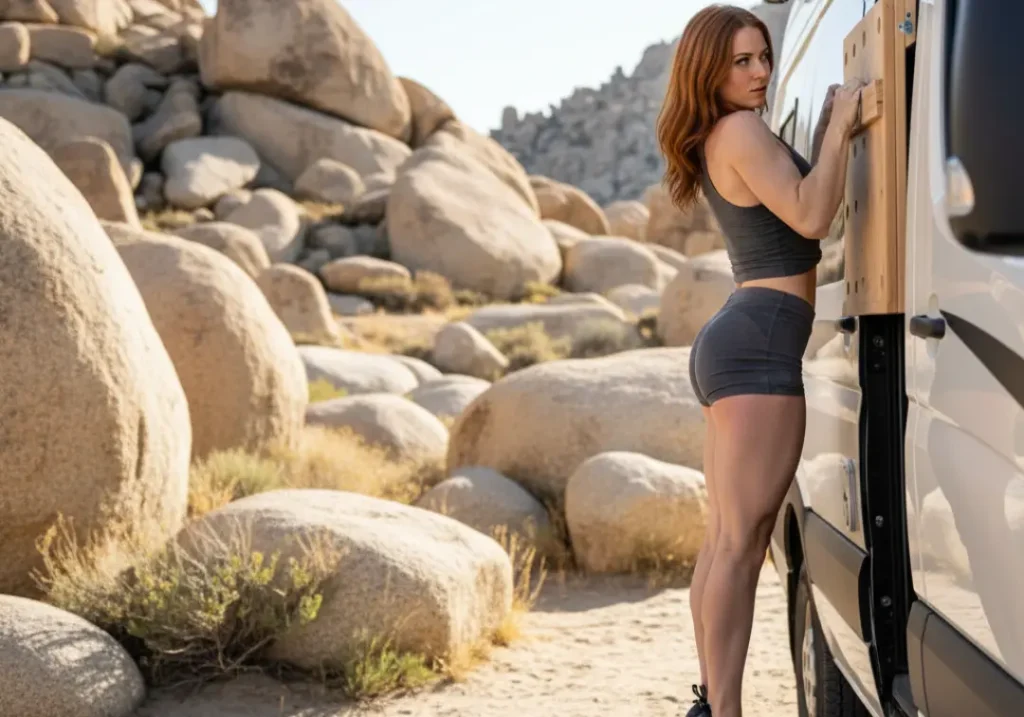
Here, all preceding elements converge on their ultimate purpose: facilitating peak athletic performance. The climber van is not just a home; it is an integrated training center designed for one thing: sending.
What Training Systems Can Be Built into a Confined Space?
The van’s space limitations should be viewed as a “beneficial constraint” that forces a focus on high-quality training. A well-designed van includes smart storage for climbers, with dedicated spots for crash pads, ropes, harnesses, chalk bags, and other climbing equipment. The most critical piece of training gear is a portable hangboard. This is supplemented by resistance bands and suspension straps for a complete bodyweight workout. This addresses a key question for many: what does training for van-dwelling climbers actually look like?
Effective training requires structured protocols, not just random exercises.
- For Hangboard Strength (Max Hangs): A proven protocol is 7-10 second hangs near failure, with 2-3 minutes of rest. Complete 3-5 sets for each grip type.
- For Hangboard Endurance (Repeaters): A common protocol is a 7-seconds-on, 3-seconds-off sequence, repeated 5-7 times. Rest for 2-3 minutes between sets.
- For a Bodyweight & Banded Strength Circuit: Perform exercises like pull-ups, push-ups, and core work for 30-45 seconds each with minimal rest, completing 3 full circuits.
Understanding the biomechanics behind this training, such as the research on finger flexor pulley loading in climbers, provides context for injury prevention. These protocols are a starting point; for more detail, consult a comprehensive guide to rock climbing finger training.
Skillfully weaving training, travel, work, and rest into a cohesive strategy for sending is the mark of a master logistician.
What is the Climber-Van-Lifer’s Ultimate Legacy?
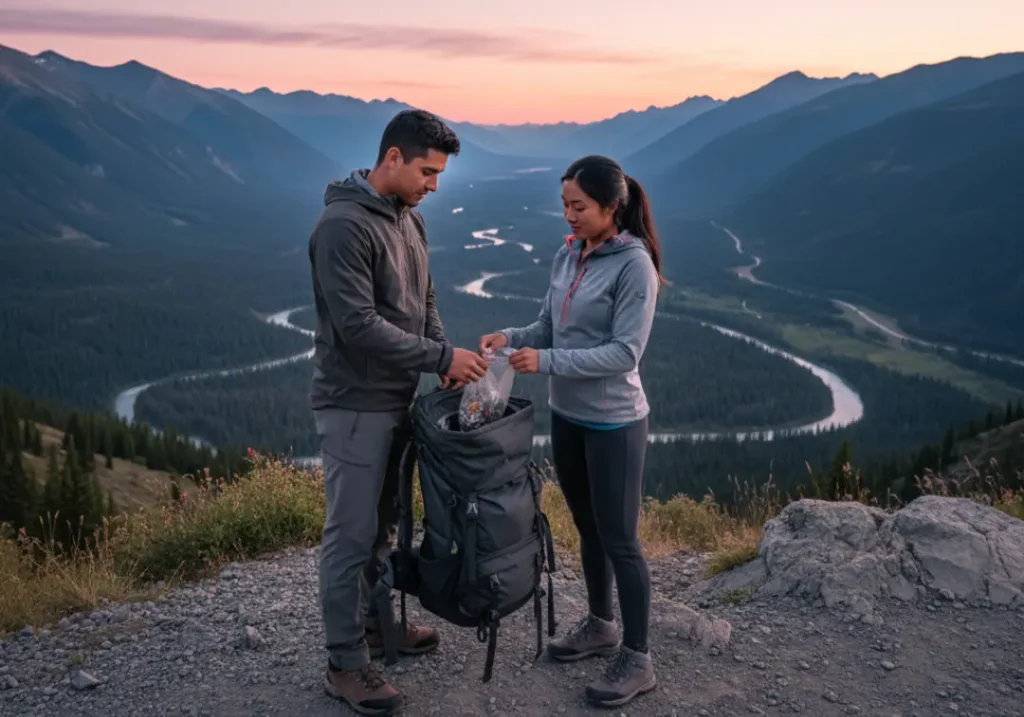
The final evolution of the van life system moves beyond the individual to encompass the climber’s relationship with the community and the environment. A truly sustainable system actively contributes to preservation and advocacy.
Why is the Leave No Trace Mandate a Non-Negotiable Code?
For the van-dwelling climber, Leave No Trace (LNT) principles are not optional guidelines; they are a mandatory code of conduct. Because van lifers spend concentrated time in sensitive areas, their potential for cumulative impact is amplified. This makes exemplary adherence to LNT essential for preserving access for all outdoor athletes.
The seven principles, tailored for climbers, are:
- Plan Ahead and Prepare: Know regulations, repackage food to minimize waste.
- Travel and Camp on Durable Surfaces: Use existing sites and trails.
- Dispose of Waste Properly: This is absolute. “Pack it in, pack it out” includes all food scraps, finger tape, and especially human waste via a self-contained system.
- Leave What You Find: Don’t build structures, respect historical sites.
- Minimize Campfire Impacts: Use a stove. If a fire is necessary, use an existing ring and ensure it is dead out.
- Respect Wildlife: Observe from a distance, store food securely, and adhere to all wildlife-related closures.
- Be Considerate of Other Visitors: Keep noise to a minimum, don’t monopolize routes, and let the sounds of nature prevail.
Poor practices from a single van lifer can cause more environmental damage than dozens of casual visitors. This code is the foundation of our legacy. You can find the official explanation of the seven principles of Leave No Trace on the National Park Service website, and explore the comprehensive climber’s guide to Leave No Trace ethics for more specific applications.
Adhering to LNT is the daily practice of stewardship, but the final evolution of the responsible climber is to channel that commitment into active community advocacy.
Conclusion
A successful climber’s van life is a deeply integrated system where financial planning, mechanical choices, logistical discipline, and ethical conduct are inextricably linked. It is not an escape, but a deliberate construction. True autonomy is achieved through robust off-grid systems, particularly LiFePO4 battery technology, which enables the remote work that so often funds the lifestyle. The van must be leveraged as a tool for athletic enhancement, incorporating specific training and recovery protocols into the daily routine. Finally, the privilege of this mobile life comes with the profound duty of stewardship, requiring exemplary adherence to Leave No Trace principles and active participation in community advocacy to protect access for the future.
Share your own van life experiences or your biggest questions about starting the journey in the comments below.
Frequently Asked Questions about Van Life for Climbers
What is the best van for climbers?
The best van for climbers depends entirely on your primary climbing style and budget. Consider a four-wheel drive Mercedes Sprinter for remote backcountry access requiring high clearance, a Ford Transit AWD for a versatile all-arounder, or a Ram ProMaster for urban-focused climbing and maximum build space.
How much does van life cost for climbers?
The total van life cost for climbers, combining the purchase and renovation cost, typically ranges from a $25,000 DIY build to over $120,000 for a professional conversion, with ongoing monthly operational costs between $800 and $5,000+. Your monthly expenses are driven by “travel velocity,” with fuel being the largest variable cost.
Where can climbers legally park their vans long-term?
For long-term stays, climbers primarily use dispersed camping on public lands (BLM and USFS), adhering strictly to the 14-day stay limit. It is illegal to establish a permanent residence on public land; you must move your campsite a significant distance (usually 25 miles) every 14 days.
Is van life sustainable for full-time climbers?
Yes, van life can be sustainable for full-time climbers if approached as a disciplined system rather than a permanent vacation. Sustainability requires a robust financial plan (often involving remote work), reliable off-grid systems, and a deep commitment to environmental stewardship and community advocacy to preserve access.
Risk Disclaimer: Rock climbing, mountaineering, and all related activities are inherently dangerous sports that can result in serious injury or death. The information provided on Rock Climbing Realms is for educational and informational purposes only. While we strive for accuracy, the information, techniques, and advice presented on this website are not a substitute for professional, hands-on instruction or your own best judgment. Conditions and risks can vary. Never attempt a new technique based solely on information read here. Always seek guidance from a qualified instructor. By using this website, you agree that you are solely responsible for your own safety. Any reliance you place on this information is therefore strictly at your own risk, and you assume all liability for your actions. Rock Climbing Realms and its authors will not be held liable for any injury, damage, or loss sustained in connection with the use of the information contained herein.
Affiliate Disclosure: We are a participant in the Amazon Services LLC Associates Program, an affiliate advertising program designed to provide a means for us to earn advertising fees by advertising and linking to Amazon.com. As an Amazon Associate, we earn from qualifying purchases. We also participate in other affiliate programs. Additional terms are found in the terms of service.



